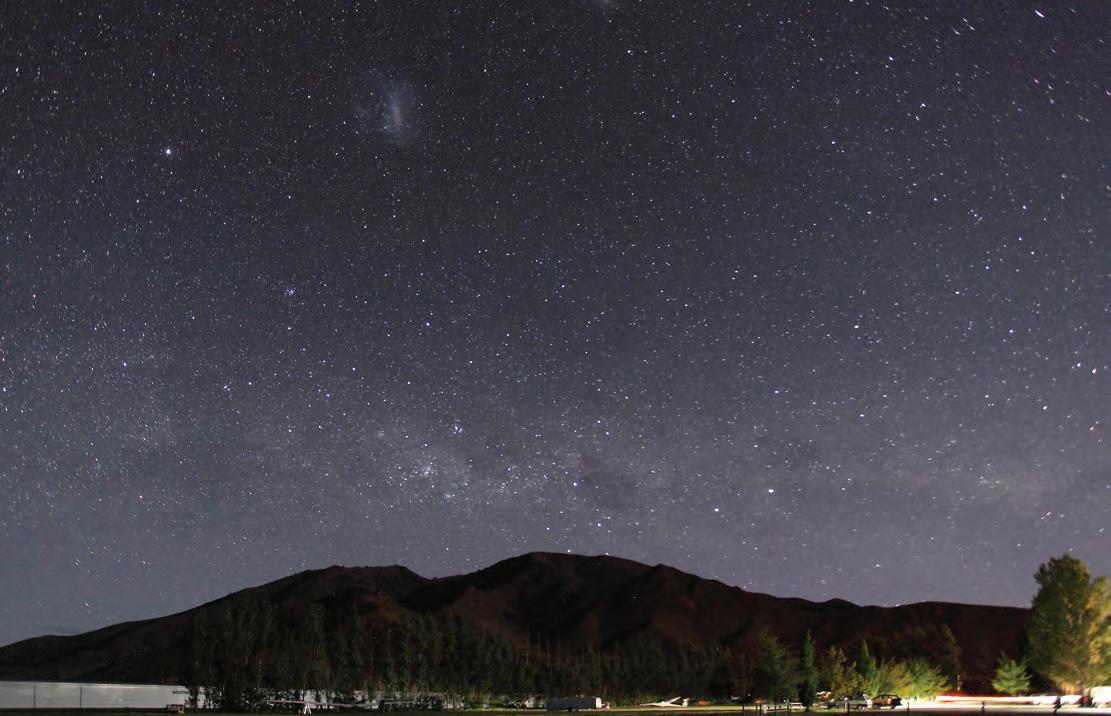
3 minute read
Setting out a Flarepath
from SoaringNZ Issue 31
by mccawmedia
LANDING IN NEAR DARK CONDITIONS
By Roger Read
Advertisement
Geoff Soper Photo
From time to time, gliders may end up arriving back to land in near-dark conditions. To minimise the risk of an accident, it helps if a fl arepath can be set up to provide enough light to help the pilot gain and maintain spatial orientation, for a safe approach and landing. The diagram (above) shows the positioning of cars with their headlights set on full beam, aiming about 30 degrees into the fi eld and parked on the edge or slightly inside the vector to be used. The numbering indicates the priority of positioning if the number of vehicles available is limited. The threshold is inset about 150 meters to enhance the safety for the turn onto fi nals, and the vehicles at the threshold can help by having their hazard lights on, fl ashing.

This set-up worked well for Terry Delore a few weeks ago, when we had about eight cars available. Terry is one of the few glider pilots in New Zealand who has completed legal night fl ying training in a glider, as well as instrument fl ying in both power planes and gliders. The night gliding was done in CGC's Janus back in October 2002, when he was contemplating the possibility of using night wave soaring to extend the distance records being attempted. PB was fi tted with appropriate lighting systems and Bruce Drake provided the launches off the Wigram lit runway. We also made some circuits and landings onto the open grass area of the airfi eld and, although the trials proved successful, the night soaring option for records was thwarted, when it was deemed any international record had to be completed within legal requirements of the country they were done in. Improved GPS-based technology would certainly make it possible and given half or more moonlight, the night fl ying in wave is an option that may yet be used to extend some distance records.
For now though, if you end up possibly having to land in poor lighting conditions, cut the fl ight short and land before it gets dark. (Alex McCaw wisely did this when he elected to land at Pukaki, rather than press on to Omarama at the end of his 1000 km fl ight).
If that isn’t an option, call ahead and organise a fl arepath at the fi eld you are familiar with and, wind permitting, aim to land to the west, toward any twilight that offers some visual horizon for orientation. Be aware of the temptation to fl are too high, as depth perception is diminished; a few extra knots on approach can help you feel your way down from the fl are point to touchdown.
And a few words about night fl ying from Terry to fi nish:
“I was worried about missing out on a record due to landing fi ve minutes after dark, so that’s when Roger Read stepped forward and said: ‘T hen comply and get a night rating!’ We did exactly that. But night record wave fl ights are not really a simple option, I feel, because of the severe cold - with no solar cockpit heating and the need to have all vents open to reduce canopy icing. This night wave stuff is problematic, as Fossett and I found at Omarama, doing some night wave trials, 17,000 ft at 11.00 pm. It was very cold and the hills felt uncomfortably close, although they were miles away in reality. We purchased some military spec night goggles (US $12,500!) after that, and we both purchased electric socks.”










